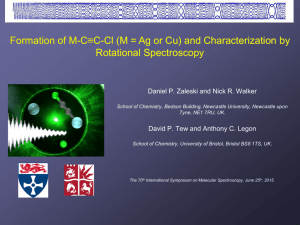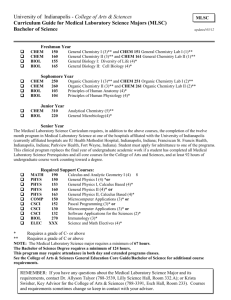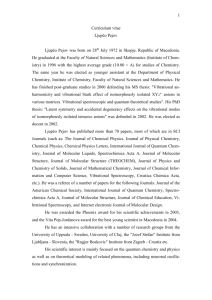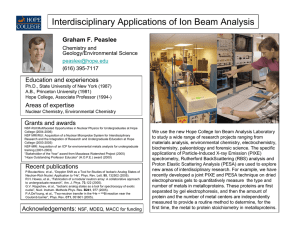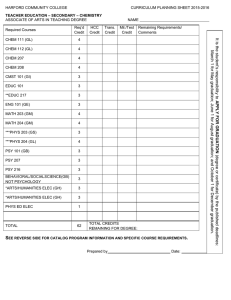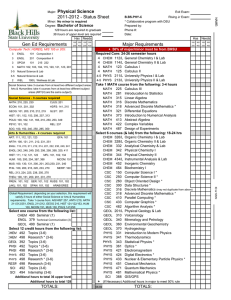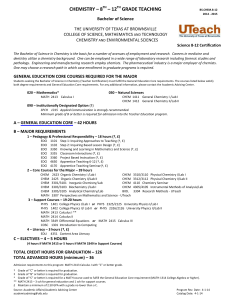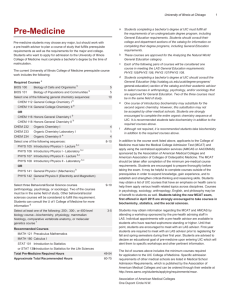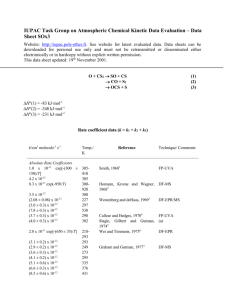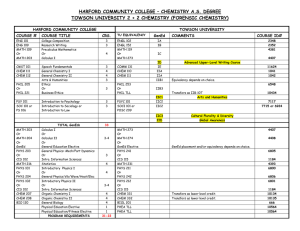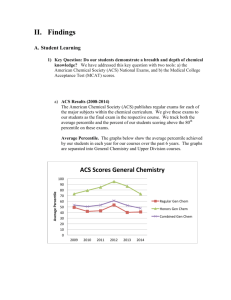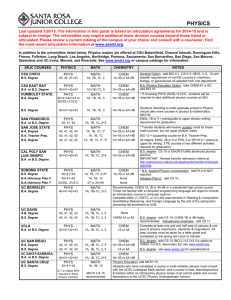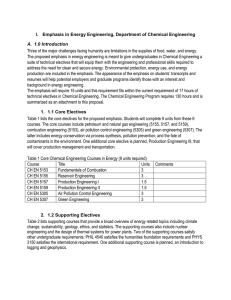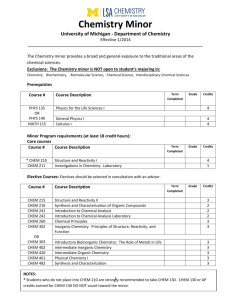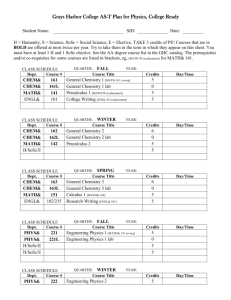Literature Review Assignment
advertisement
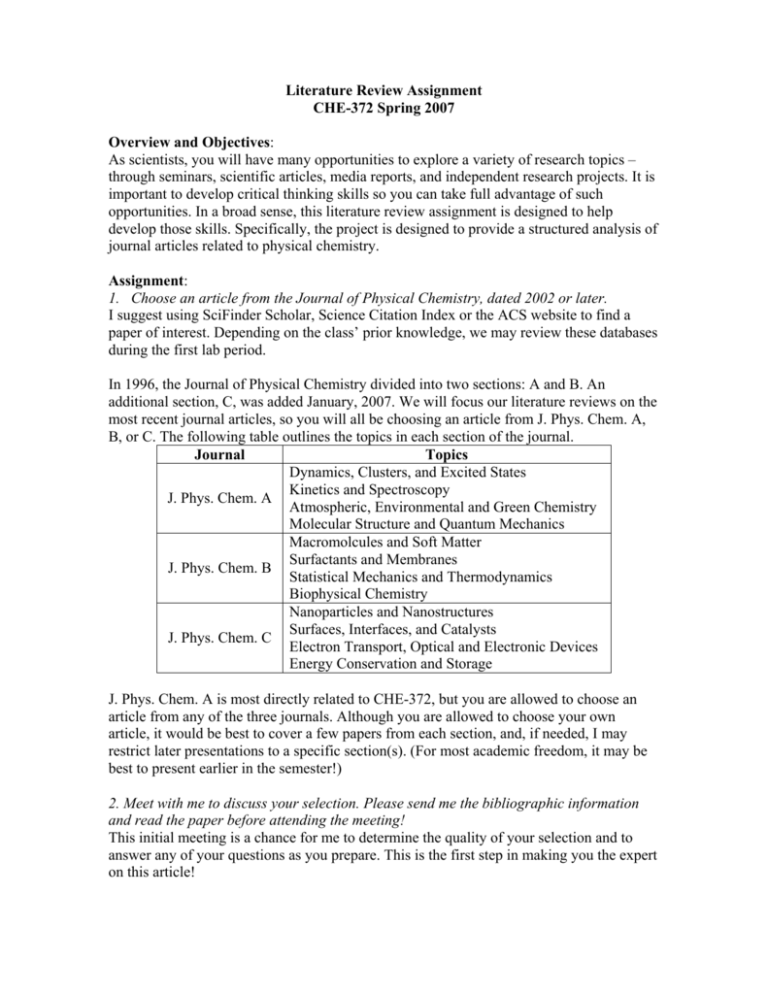
Literature Review Assignment CHE-372 Spring 2007 Overview and Objectives: As scientists, you will have many opportunities to explore a variety of research topics – through seminars, scientific articles, media reports, and independent research projects. It is important to develop critical thinking skills so you can take full advantage of such opportunities. In a broad sense, this literature review assignment is designed to help develop those skills. Specifically, the project is designed to provide a structured analysis of journal articles related to physical chemistry. Assignment: 1. Choose an article from the Journal of Physical Chemistry, dated 2002 or later. I suggest using SciFinder Scholar, Science Citation Index or the ACS website to find a paper of interest. Depending on the class’ prior knowledge, we may review these databases during the first lab period. In 1996, the Journal of Physical Chemistry divided into two sections: A and B. An additional section, C, was added January, 2007. We will focus our literature reviews on the most recent journal articles, so you will all be choosing an article from J. Phys. Chem. A, B, or C. The following table outlines the topics in each section of the journal. Journal Topics Dynamics, Clusters, and Excited States Kinetics and Spectroscopy J. Phys. Chem. A Atmospheric, Environmental and Green Chemistry Molecular Structure and Quantum Mechanics Macromolcules and Soft Matter Surfactants and Membranes J. Phys. Chem. B Statistical Mechanics and Thermodynamics Biophysical Chemistry Nanoparticles and Nanostructures Surfaces, Interfaces, and Catalysts J. Phys. Chem. C Electron Transport, Optical and Electronic Devices Energy Conservation and Storage J. Phys. Chem. A is most directly related to CHE-372, but you are allowed to choose an article from any of the three journals. Although you are allowed to choose your own article, it would be best to cover a few papers from each section, and, if needed, I may restrict later presentations to a specific section(s). (For most academic freedom, it may be best to present earlier in the semester!) 2. Meet with me to discuss your selection. Please send me the bibliographic information and read the paper before attending the meeting! This initial meeting is a chance for me to determine the quality of your selection and to answer any of your questions as you prepare. This is the first step in making you the expert on this article! 3. Send the bibliographic information to the class. Each member of the class is required to prepare one or two questions based on the reading. These questions will be collected, even if they are not used during class. 4. Prepare for a discussion of the article. Once you have read the paper thoroughly, prepare some information for the class discussion. You are responsible for 10-15 minutes of class to present vital information about the article. During the presentation, you should touch on the following: 1. 2. 3. 4. 5. 6. 7. 8. 9. What are the key concepts of this research topic? What were the goals of the authors? How did the authors achieve their goals? (Methods!, instruments, etc) What were the major findings and conclusions? What additional work is necessary or recommended? (Impressive if original!) How did the authors build on existing knowledge? Has there been any additional work completed on this topic? If so, what? Have other research groups verified the findings or built off of these results? How does this paper relate to topics from this class or CHE-371? I do not want to see a list of these questions with answers. Be creative in how you present the material – you want to keep the class and me interested! You are not required to answer all of the questions. For example, if you feel that some of the questions are best left for the discussion, you do not need to address it during the presentation. But do address it during the discussion! Tips: 1. You don’t have to use technology (like PowerPoint) for this presentation if you feel you can better address the requirements in another fashion. 2. Read the abstract carefully. If well-written, it should address several of the questions outlined above. 3. Pay close attention to graphs, figures, and tables in the article. They represent the material found to be important by the authors. I recommend using several of these in your presentation. 4. Explore the references listed in the article. This will be important to gaining an understanding of how this article fits in the ‘larger picture’. 5. Explore articles that reference the article to see how the research area has developed since the publication of your article. This can easily be done in both SciFinder Scholar and Science Citation Index, but not as easily at the ACS site. (Note: Your chosen article may not have been referenced by other authors.) 6. Prepare yourself to lead a discussion on the article. This discussion (10-15 minutes) can take a variety of forms. In the most basic, we will have a question and answer session based on the questions prepared by your classmates. However, you have some freedom with this discussion. With prior approval, you can prepare your own plans for the 10-15 minutes of discussion. For example, you could form your own questions based on the reading, break the class into small group discussions, or have a think/pair/share activity. For this part of the assignment, you will be graded on your ability to lead the discussion session, your preparation, and your knowledge of the article. 7. Make your presentation and lead the discussion.




